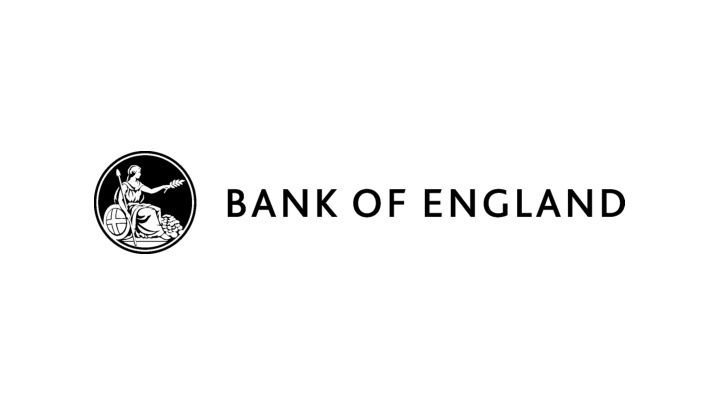



Lambda Lecture at the London School of Economics Mark Carney Governor of the Bank of England 16 th January 2017
Monetary policy trade-off Inflation relative to target Output gap 3
Monetary policy trade-off Inflation relative to target Output gap Preferred trade-off 4
Monetary policy trade-off Inflation relative to target Phillips Curve Output gap Preferred trade-off 5
Monetary policy trade-off Inflation relative to target Phillips Curve Output gap Preferred trade-off 6
Monetary policy trade-off Inflation relative to target Phillips Curve Output gap Preferred trade-off 7
Demand shocks imply no trade-off Inflation relative to target Phillips Curve Output gap Preferred trade-off 8
Demand shocks imply no trade-off Inflation relative to target Phillips Curve Inflationary → tighter policy → return to equilibrium Output gap Disinflationary → looser policy → return to equilibrium Preferred trade-off 9
Demand shocks dominated during the “Great Moderation” (1993- 2007)… Inflation (%) 3 2.5 Output gap (%) 2 -1 -0.5 0 0.5 1 1.5 1 0.5 10
… whereas supply shocks have dominated post financial crisis Inflation (%) 6 5 4 3 2 -6 -5 -4 -3 -2 -1 0 1 Output gap (%) 1 0 -1 11
Demand shocks dominated in US… United States Inflation (%) 5 Great moderation 4 3 2 -8 -6 -4 -2 0 2 4 1 Output gap (%) 0 -1 -2 12
Demand shocks dominated in US… and the euro area United States Euro area Inflation (%) 5 Inflation (%) 5 Great moderation Great moderation 4 4 3 3 8 2 2 -8 -6 -4 -2 0 2 4 -4 -3 -2 -1 0 1 2 3 4 1 1 Output gap (%) Output gap (%) 0 0 -1 -1 -2 -2 13
… including post crisis United States Euro area Inflation (%) 5 Inflation (%) 5 Great moderation Great moderation Financial crisis and after 4 4 3 3 8 2 2 -8 -6 -4 -2 0 2 4 -4 -3 -2 -1 0 1 2 3 4 1 1 Output gap (%) Output gap (%) 0 0 -1 -1 -2 -2 14
… including post crisis United States Euro area Inflation (%) 5 Inflation (%) 5 Great moderation Great moderation Financial crisis and after Financial crisis and after 4 4 3 3 8 2 2 -8 -6 -4 -2 0 2 4 -4 -3 -2 -1 0 1 2 3 4 1 1 Output gap (%) Output gap (%) 0 0 -1 -1 -2 -2 15
Policy problem 𝑀𝑝𝑡𝑡 𝑢 ≡ 𝜌 𝑢 − 𝜌 ∗ 2 + 𝜇 𝑧 𝑢 − 𝑧 𝑢 ∗ 2 Deviation of inflation from target 16
Policy problem 𝑀𝑝𝑡𝑡 𝑢 ≡ 𝜌 𝑢 − 𝜌 ∗ 2 + 𝜇 𝑧 𝑢 − 𝑧 𝑢 ∗ 2 Deviation of Output gap inflation from target 17
Policy problem Preference for output stabilisation 𝑀𝑝𝑡𝑡 𝑢 ≡ 𝜌 𝑢 − 𝜌 ∗ 2 + 𝜇 𝑧 𝑢 − 𝑧 𝑢 ∗ 2 Deviation of Output gap inflation from target 18
Simple optimal policy 𝜌 𝑢 − 𝜌 ∗ = − 𝜇 ∗ ) 𝜆 (𝑧 𝑢 − 𝑧 𝑢 19
Simple optimal policy 𝜌 𝑢 − 𝜌 ∗ = − 𝜇 ∗ ) 𝜆 (𝑧 𝑢 − 𝑧 𝑢 Deviation of Output gap inflation from target 20
Simple optimal policy 𝜌 𝑢 − 𝜌 ∗ = − 𝜇 ∗ ) 𝜆 (𝑧 𝑢 − 𝑧 𝑢 Deviation of Output gap inflation from target Slope of the Phillips Curve 21
Simple optimal policy Inflation relative to target 𝜇 Slope is − 𝜆 Output gap Preferred trade-off 22
Slopes imply 𝝁 around 0.1- 0.2 since 1993… or around ¼ since 2008 Data outturns MPC forecasts 6 1.0 Inflation (%) Inflation deviation from target (pp) Great moderation Financial crisis and after Great moderation Financial crisis and after 0.5 4 0.0 -1 -0.5 0 0.5 1 1.5 2 Cumulative growth, relative to trend (%) 2 -0.5 -6 -4 -2 0 2 Output gap (%) -1.0 0 -1.5 -2 -2.0 23
Slopes imply 𝝁 around 0.1- 0.2 since 1993…and around ¼ since 2008 Data outturns MPC forecasts 6 1.0 Inflation (%) Inflation deviation from target (pp) Great moderation Financial crisis and after Great moderation Financial crisis and after 0.5 4 0.0 -1 -0.5 0 0.5 1 1.5 2 Cumulative growth, relative to trend (%) 2 -0.5 -6 -4 -2 0 2 Output gap (%) -1.0 0 -1.5 -2 -2.0 24
Loss function with financial stability 𝑀𝑝𝑡𝑡 𝑢 ≡ 𝜌 𝑢 − 𝜌 ∗ 2 + 𝜇 𝑧 𝑢 − 𝑧 𝑢 ∗ 2 + 𝟐 𝐺𝑄𝐷 𝛾 𝒕 𝑢 − 𝒕 𝑢 ∗ 2 Deviation of Output gap Financial inflation from target Stability Indicators 25
No stimulus in August would have meant no weight on output 4 Inflation (%) 3.5 3 2.5 Output gap (%) 2 -2 -1 0 1 Preferred trade-off August, no stimulus if 𝜇 =0.1 1.5 Preferred trade-off if 𝜇 =1 1 26
August stimulus traded off some inflation for more output and lower unemployment 4 Inflation (%) 3.5 3 August, with stimulus 2.5 Output gap (%) 2 -2 -1 0 1 Preferred trade-off August, no stimulus if 𝜇 =0.1 1.5 Preferred trade-off if 𝜇 =1 1 27
Trade-off more challenging in November 4 Inflation (%) 3.5 3 November August, with stimulus 2.5 Output gap (%) 2 -2 -1 0 1 Preferred trade-off August , no stimulus if 𝜇 =0.1 1.5 Preferred trade-off if 𝜇 =1 1 28
UK inflation high and volatile during the 1970s and 1980s Inflation (%) 28 26 24 22 20 18 16 14 12 10 8 6 4 2 0 -6 -4 -2 0 2 4 6 Output gap (%) 30
Recommend
More recommend